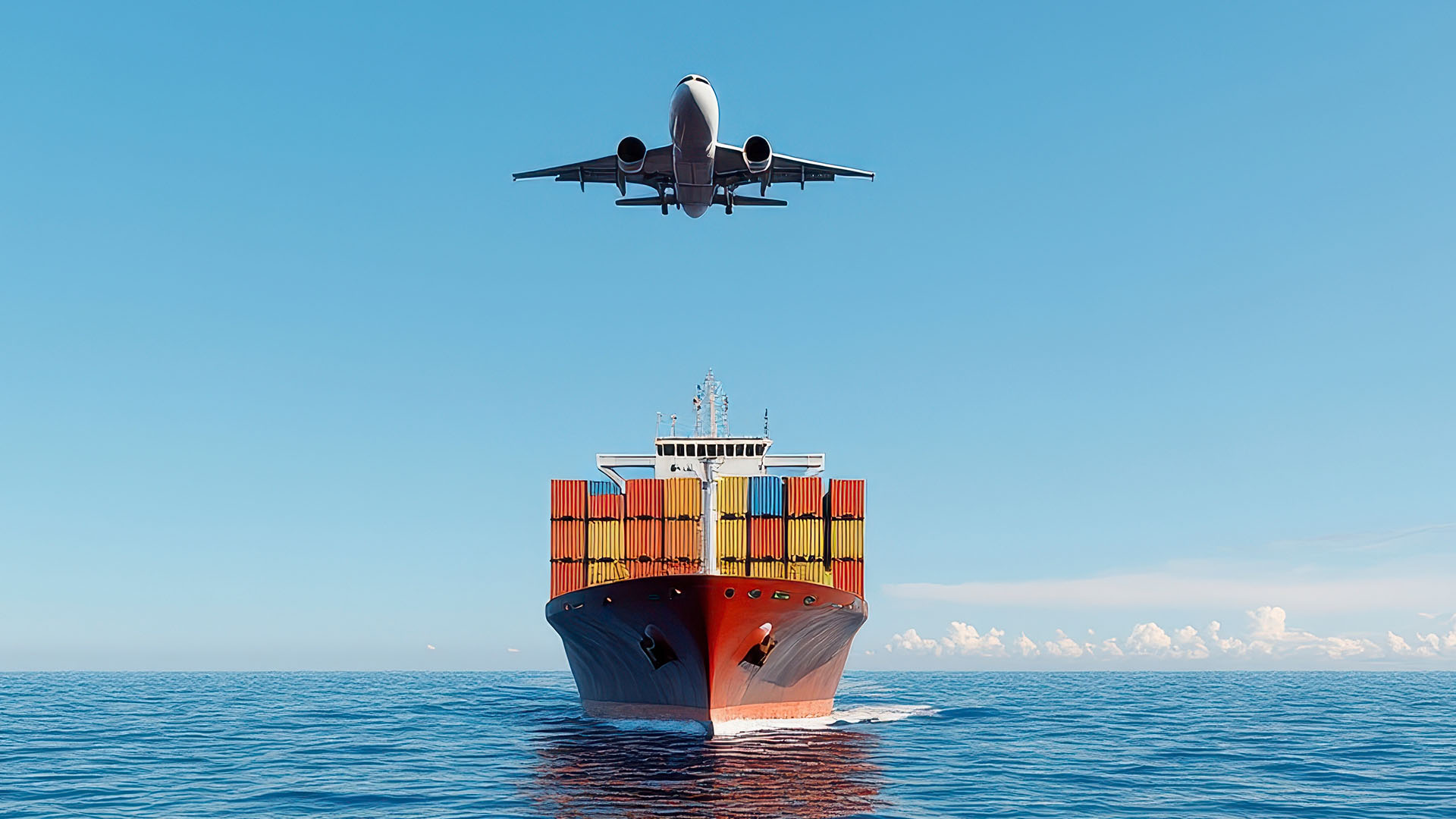Choosing between air freight and ocean freight isn’t just about speed. It’s a balance of budget, timelines, cargo type, and risk tolerance. If you’re shipping internationally, knowing the true cost breakdown between these two freight methods is key to building a supply chain that works.
This guide will walk you through the cost structures, technical considerations, and strategic use cases for air and ocean freight.
Global Freight Statistics: Air vs Ocean
- Ocean freight handles ~90% of global trade by volume
- Ocean freight accounts for ~70–80% of global trade by value
- Air freight represents less than 1% of global trade volume
- Air freight carries over 35% of global trade by value
Sources:
Air Freight vs Ocean Freight Costs: Quick Comparison
| Factor | Air Freight | Ocean Freight |
|---|---|---|
| Transit Time | 1–7 days | 12–40+ days |
| Cost per kg (approx.) | $4–$12+ | <$1.50 (LCL); lower for FCL |
| Cargo Type | Time-sensitive, high-value | Bulky, non-urgent, heavy |
| Carbon Footprint | High (avg. 500g CO₂/ton-km) | Low (avg. 10g CO₂/ton-km) |
| Capacity Limits | Strict (dimensional weight applies) | Much higher capacity |
| Reliability | High schedule reliability | Subject to port congestion, weather |
Cost Breakdown: Air Freight
Air freight charges are based on either the actual weight or dimensional (volumetric) weight, whichever is greater. The formula used globally for dimensional weight is:
(Length x Width x Height in cm) / 6000 = Volumetric Weight in kg
Airlines also apply fuel surcharges, security fees, and sometimes peak season adjustments. For many trade lanes, expect a price range of $4 to $12 per kilogram, depending on volatility and available capacity.
Costs are examples and subject to change.
Cost Breakdown: Ocean Freight
Ocean freight pricing depends on whether you’re shipping FCL (Full Container Load) or LCL (Less than Container Load):
- FCL: Flat rate per container (e.g., 20’, 40’, 40’ HC)
- LCL: Priced per CBM or per 1000 kg, whichever is greater
A typical FCL from Shanghai to LA may range between $2,000 and $5,000 per 40’ container. LCL shipments are often under $100 per CBM. Ocean wins on scale, but be prepared for additional port, drayage, and delay costs.
Costs are examples and subject to change.
When Air Freight Makes Financial Sense
- Reducing stockouts or avoiding lost sales
- Just-in-time production or tight replenishment cycles
- Urgent warranty or repair shipments
- Short shelf-life products (pharma, perishables, seasonal goods)
Air is also less exposed to customs and port delays, making it more predictable under pressure.
When Ocean Freight is the Smarter Play
- Shipping high-volume, low-margin inventory
- Forecasted demand allows 30+ day lead times
- Bulky or dense cargo that’s costly by air
- Heavy items or raw materials
Ocean is the budget-friendly engine of global logistics. For large-scale moves, it’s nearly unbeatable on a per-unit basis.
Technical Tip: Hybrid Freight Solutions
Consider mixing methods. Many companies split shipments—sending 10 percent by air to meet early demand and the rest by sea. You can also explore sea-air solutions through strategic hubs like Dubai or Singapore to balance cost and delivery time.
Final Air Freight vs Ocean Freight Costs Thoughts
There’s more to cost than rates per kilo or per container. Ask yourself what a delay could really cost. Can you afford to wait for restock? Can you afford not to?
At Zarach Logistics, we help clients evaluate real trade-offs in transit time, inventory cost, and delivery risk. As a licensed NVOCC and freight forwarder, we offer both air and ocean solutions—plus hybrid models tailored to your industry, your cargo, and your budget.
Need Help Comparing Modes?
Tell us your lane, timeline, and cargo type. We’ll build you a side-by-side breakdown with transit time, costs, and pros and cons so you can make the call that works for your business.



